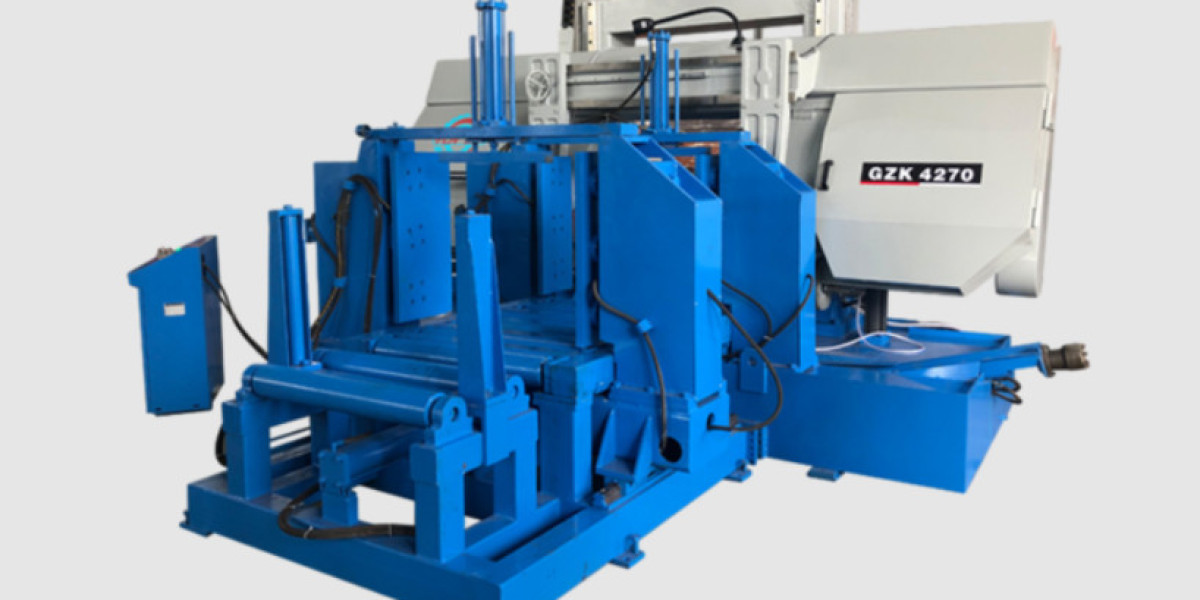At the start of many production shifts, operators prepare a Metal Cutting Band Sawing Machine and install an M42 Bi-Metal Band Saw Blade to handle a range of scheduled cutting tasks. The combination is familiar to many workshops because it supports steady feed motion and allows operators to monitor the material’s reaction closely. Early checks on blade tension, guide alignment, and coolant lines help set the tone for the rest of the shift.
Metal cutting requires attention to multiple feedback signals. As the blade enters the material, the sound and feel of the cut give clues about whether the setup is balanced. A smooth tone typically suggests that the blade is tracking correctly. A harsher sound may indicate excessive pressure or misalignment between guides. Operators often respond quickly to these changes by making small adjustments before continuing.
Feed control plays an important role. Applying too little pressure may cause the blade to rub rather than cut, producing fine powder-like chips. Excessive pressure compresses the chip formation area, generating more heat and increasing resistance. A balanced feed encourages well-shaped chips that move away easily through coolant flow. Establishing this balance often takes practice, especially when cutting materials with varying hardness.
The structural design of the sawing machine supports overall stability. Machines with strong frames minimize vibration, which helps the blade maintain its line of travel. Guide arms positioned closer to the workpiece improve stability but must be adjusted to avoid unnecessary friction. Smooth wheel rotation and consistent blade tension also contribute to reliable cutting progress.
The M42 bi-metal blade suits a wide range of materials typically encountered in workshops. Its tooth edge supports general steel cutting without requiring frequent replacement. However, tooth pitch must be chosen carefully. Hollow shapes benefit from finer pitches, while thicker bars require coarser teeth for proper chip evacuation. Matching pitch to material helps reduce noise and keeps the cutting rhythm predictable.
Coolant distribution can influence cutting quality as well. A well-directed coolant stream reduces heat buildup and supports smooth chip removal. When coolant lines partially clog, the blade may run hotter and chips may stick to the tooth edge. Daily cleaning of filters and nozzles prevents such issues. Experienced technicians often check coolant flow visually before beginning long runs.
Clamping systems ensure the workpiece remains stable. Proper clamping reduces vibration and prevents the blade from drifting during cutting. When cutting long profiles, additional support stands help maintain balance and reduce bending. Secure positioning is especially important when dealing with irregular shapes or mixed materials within the same batch.
Observing chip characteristics helps operators understand cutting conditions without stopping the machine. Chips with a uniform curl often reflect stable cutting. If chips become discolored or compacted, technicians adjust feed pressure or revisit blade tensioning. This ongoing monitoring supports consistent outputs during long production hours.
Maintaining cutting performance requires periodic attention to the machine’s mechanical components. Guide bearings should be lubricated, and drive wheels need to remain free of debris. Tension mechanisms require calibration from time to time. Regular checks prevent gradual performance loss that can affect the cut’s appearance.














